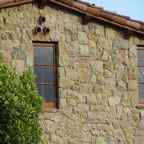Natural stone is an environmentally-friendly material and no matter how you slice it, man-made materials just don’t live up to the task.
“Use Natural Stone” website is a tremendous resource for information on all topics related to the use of natural stone for commercial and residential use. This recent article focuses on its environmentally friendly attributes.
As climate change impacts communities throughout the country in the form of devastating fires, massive flooding and high winds, architects, designers, and environmentally conscious homeowners are paying even more attention to the building materials they source and use than ever before. Carbon reduction targets are part of those discussions and natural stone has a larger spot at the table. Increasingly, architects and designers are looking for products that meet sustainability standards to help them make both recommendations and decisions.
Architecture firms are specializing in designing and building with sustainability in mind. Nathan Kipnis, FAIA, LEED AP BD+C, founder and principal of Kipnis Architecture + Planning, often incorporates natural stone for a number of reasons and one of them is because he seeks to create homes that are resilient and can handle both natural and man-made events.
Ultimately, architects and designers and stone specialists such as Monarch Stone International, must understand what a buyer wants in using one material over the other to meet their needs.
Why Using Natural Stone Matters
Many quartz or engineered stone products are marketed and promoted as natural stone and it creates confusion for the buyer. However, natural stone is a naturally occurring material made out of various minerals in Mother Nature’s pallet. Manmade quartz is a mixture of crushed quartz mixed with a resin and other additives that are processed and cured into a solid form or slab.”
When making a decision whether to use manmade vs natural materials, keep in mind natural stone is a chemical free material and has very low embodied carbon. When making material selections, it is important to make sure you consider the chemicals, ingredients and carbon footprint of the material.
Where you source the stone is just as important as deciding which stone to use. Stone that is locally quarried tends to fit in better with its surroundings, for example, not to mention it’s an eco-friendly option, since a significant percentage of any material’s embodied energy is from transportation.
By using local stone, the embodied energy (and therefore carbon) involved with the transportation is greatly reduced, which is especially true for such a heavy building material. Additionally, depending on the application and type of natural stone being specified and installed, it can last for 50 to 100 years or more.
For those who want to ensure the sustainability and environmental performance of natural stone, the Natural Stone Sustainability Standard (ANSI/NSC 373) is a great resource.

